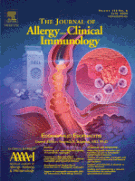Longitudinal immune profiling reveals dominant epitopes mediating long-term humoral immunity in COVID-19–convalescent individuals - 05/04/22
 , Chiyu Zhang, PhD a, ⁎
, Chiyu Zhang, PhD a, ⁎  , Dongming Zhou, PhD a, b, ⁎
, Dongming Zhou, PhD a, b, ⁎  , Xia Jin, MD, PhD a, ∗⁎
, Xia Jin, MD, PhD a, ∗⁎ 
Abstract |
Background |
Severe acute respiratory syndrome coronavirus 2 (SARS-CoV-2) is a highly pathogenic and contagious coronavirus that caused a global pandemic with 5.2 million fatalities to date. Questions concerning serologic features of long-term immunity, especially dominant epitopes mediating durable antibody responses after SARS-CoV-2 infection, remain to be elucidated.
Objective |
We aimed to dissect the kinetics and longevity of immune responses in coronavirus disease 2019 (COVID-19) patients, as well as the epitopes responsible for sustained long-term humoral immunity against SARS-CoV-2.
Methods |
We assessed SARS-CoV-2 immune dynamics up to 180 to 220 days after disease onset in 31 individuals who predominantly experienced moderate symptoms of COVID-19, then performed a proteome-wide profiling of dominant epitopes responsible for persistent humoral immune responses.
Results |
Longitudinal analysis revealed sustained SARS-CoV-2 spike protein–specific antibodies and neutralizing antibodies in COVID-19 patients, along with activation of cytokine production at early stages after SARS-CoV-2 infection. Highly reactive epitopes that were capable of mediating long-term antibody responses were shown to be located at the spike and ORF1ab proteins. Key epitopes of the SARS-CoV-2 spike protein were mapped to the N-terminal domain of the S1 subunit and the S2 subunit, with varying degrees of sequence homology among endemic human coronaviruses and high sequence identity between the early SARS-CoV-2 (Wuhan-Hu-1) and current circulating variants.
Conclusion |
SARS-CoV-2 infection induces persistent humoral immunity in COVID-19–convalescent individuals by targeting dominant epitopes located at the spike and ORF1ab proteins that mediate long-term immune responses. Our findings provide a path to aid rational vaccine design and diagnostic development.
El texto completo de este artículo está disponible en PDF.Key words : SARS-CoV-2, COVID-19, long-term immune response, humoral immunity, proteome-wide peptide microarray, dominant epitope
Abbreviations used : BSA, CoV, COVID-19, FP, M, MERS, N, nsp, NT50, NTD, OD, ORF, PBS, PBS-T, PDB, RBD, S, SARS
Esquema
| The first 5 authors contributed equally to this article, and all should be considered first author. |
|
| This work was supported by the following grants: National Natural Science Foundation of China (grant 31870922 to D.Z.), Natural Science Research Project of Nantong Science and Technology Bureau (XG202003-2 and XG202003-4 to R.L.), National Key Research and Development Program of China (2017YFA0103501 to X.K.), Science and Technology Service Network Initiative (KFJ-STS-QYZD-187 to X.K.), Key Program of the Chinese Academy of Sciences (QYZDJ-SSW-SM01 to X.K.), and General Program of National Natural Science Foundation of China (81570827 to L.H. and 31471224 to X.K.). |
|
| Disclosure of potential conflict of interest: The authors declare that they have no relevant conflicts of interest. |
Vol 149 - N° 4
P. 1225-1241 - avril 2022 Regresar al númeroBienvenido a EM-consulte, la referencia de los profesionales de la salud.

